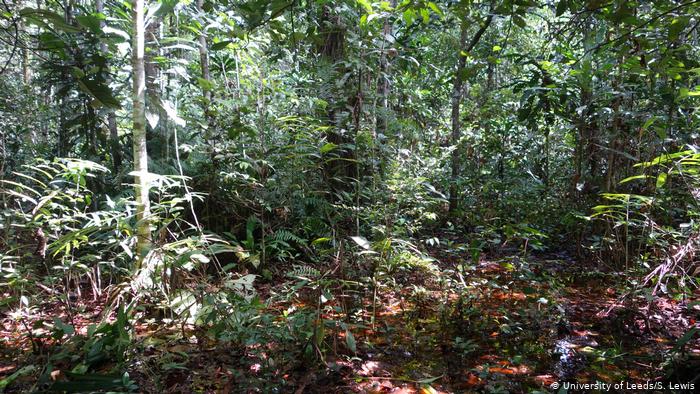By Nina Mitch
A prediction of two years ago has become a reality. A second peat bog area was recently discovered in the Congo Basin Forest by scientists from the University of Leeds in England and from the University Kisangani in Democratic Republic of Congo (DRC).
This discovery was confirmed during the 2nd Peatland media expedition which was organised by Greenpeace Africa from June 15th to 19th in the Northwest of the the DRC, precisely in Equateur province. Greenpeace is a non-violent independent global campaigning organisation acting to change attitudes and behavior, to protect and conserve the environment. The newly discovered peat, yet again has stressed the need why DRC should care about peat bogs.
Peat is a moist organic soil made partially of decomposed vegetable matter. Peat bogs in good condition act as carbon sinks. When trees grow, they release carbon into the atmosphere, but when they die, they normally decompose and contain carbon outside the atmosphere. Decomposition is only partial after one year in a marshy tropical forest, leading to a peaty carbon accumulation.

The new peat bog in the Congo Basin is located in Mpeka village between Ruki and Busira rivers in Equateur Province, in northwestern DRC.
Corneille Ewango is a professor at the University of Kisangani. He says the peat bog indicates that the area is rich in carbon and that the peat is also formed from the erosion of the two rivers over the years.
“What’s interesting is that just 500 meters from the river, we are already 1 meter deep. This is a good thing since it is consistent with our prediction that peat here is formed by the erosion of the river. That means there is erosion coming from the river and piling up here, “he explained.

However, Greenpeace says it is awaiting the
results of experts to inform its
advocacy on how to protect the climate through the protection of peat bogs in
the Congo Basin. Experts are unanimous on the need for government to recognize
the importance of peat bogs and cease the authorization of activities and
projects that may be destroy the ecosystem.
“For Greenpeace, peatlands are of paramount
importance because if all the tons of carbon that are stored in these peat bogs
are destroyed it will increase the heat in the atmosphere enormously. So for
us, the climate is very important and we must do everything to protect it. Greenpeace makes a plea for the peat bogs of
the Congo Basin to be effectively protected and not to have activities that
will endanger them. For us, it is unacceptable that the same government who
should be in the vanguard of protecting peatlands is the one endangering it. We
must think of developing other economic sources than logging in the Congo
Basin, ” Patient Muamba, forest project manager at Greenpeace emphasized.
Peat bogs in the Congo Basin forest is estimated at 14 million hectares which is larger than the size of England. These peatlands contain one-third of the world’s tropical peatland carbon stock of 105 billion tonnes and its destruction threatens the world with the release of greenhouse gases equivalent with an industrialized country like the United States for 20 years.
With these laudable features, convincing the indigenous inhabitants of the area to own climate protection initiatives have been largely unsuccessful. The populations living around these peatlands are made up of rural people who mainly practice subsistence farming and covet the forest environment than savanna conditions due to the prospects of better yields.
Their actions ignorantly lead to the massive destruction of forest and savannah ecosystems and therefore strip them of their biodiversity. Traditional agriculture, which uses a low-production, rustic technology, promotes forest restoration by the fallow system. This practice impoverishes soils and forces farmers to look for new land in the forest.
Ewango sees the involvement of rural populations
who depend on peatlands to make a living as crucial in the protection of
forests, and also climate. He admonished the local population to protect
peatlands and cooperate with the scientists who are doing exploring the area.
“The local population must protect this forest
since their survival depends on its existence. The scientists did not come to
exploit or do anything. We ask the population to accompany them in their
explorations since it is in the interest of all, “he said.
You will recall that, the first peat bog was
discovered in 2017 by a joint team of experts from the University of Leeds in
England and those from the DRC in Lokolama village, located 55 km from Mbandaka
City, Equateur province. This peat bog was 3.5 meters deep.













